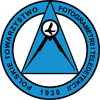APCRS-2019-0007
AUTHOR(S):
Piotr Wężyk, Paweł Hawryło, Marta Szostak, Karolina Zięba-Kulawik, Monika Winczek, Ewa Siedlarczyk, Adam Kurzawiński, Justyna Rydzyk, Jowita Kmiecik, Wojciech Gilewski, Monika Szparadowska, Artur Warchoł, Agnieszka Turowska
TITLE:
USING LIDAR POINT CLOUDS IN DETERMINATION OF THE SCOTS PINE STANDS SPATIAL STRUCTURE MEANING IN THE CONSERVATION OF LICHEN COMMUNITIES IN „BORY TUCHOLSKIE” NATIONAL PARK
ABSTRACT:
The aim of the research carried out in 2018 and financed by the Forest Fund was the analysis of biometric features and parameters of pine stands in the area of the „Bory Tucholskie” National Park (PNBT), where a program of active protection of lichen was initiated in 2017. Environmental analyses were conducted in relation to selected biometric features of trees and stands using laser scanning (LiDAR), including ULS (Unmanned Laser Scanning; RIEGL VUX-1) and TLS (Terrestrial Laser Scanning; FARO FOCUS 3D; X130). Thanks to the application of LiDAR technology, the structure of pine stands was precisely determined by means of a series of descriptive statistics characterizing the 3D spatial structure of vegetation. Using the Trees Crown Model (CHM), the analysis of the volume of tree crowns and the volume of space under canopy was performed. For the analysed sub-compartments, GIS solar analyses were carried out for the solar energy reaching the canopy and the ground level due to active protection of lichen. Multispectral photos were obtained using a specialized RedEdge-M camera (MicaSense) mounted on the
UAV multi rotor platform Typhoon H520 (Yuneec). Flights with a thermal camera were also performed in order to detect places on the ground with high temperature. Plant indices: NDVI, NDRE, GNDVI and GRVI were also calculated for sub-compartments. The data obtained in 2017 and 2018 were the basis for spatial and temporal analyses of 4-D changes in stands which were related to the removal of some trees and organic layer (litter, moss layer).
KEY WORDS: point clouds, unmanned laser scanning, terrestrial laser scanning, Bory Tucholskie National Park, UAV
DOI: https://doi.org/10.2478/apcrs-2019-0007
